This is one in a series of posts on the Fujifilm GFX 50S and 50R. You should be able to find all the posts about that camera in the Category List on the right sidebar, below the Articles widget. There’s a drop-down menu there that you can use to get to all the posts in this series; just look for “GFX 50S”. It’s also in the Z6/7 category.
The previous post was an informal comparison test contrasting the Fuji 100-200 mm f/5.6 zoom on the GFX 50R against the excellent Nikon 70-200/2.8E on the Nikon Z7 at 100 mm for the Fuji and 70 mm for the Nikon. . Now I’m going to set the Fuji zoom to 200mm and the Nikon one to 145mm. The Z7 and the GFX have the same resolution horizontally, but I’m a fan of 4:3 pictures, so I equalized for image height. If you like wide aspect ratios, you may consider that to be stacking the deck.
Here’s the scene with the GFX and the zoom set to 200 mm, with the target area in the upper right corner. The trees are about 500 meters away.
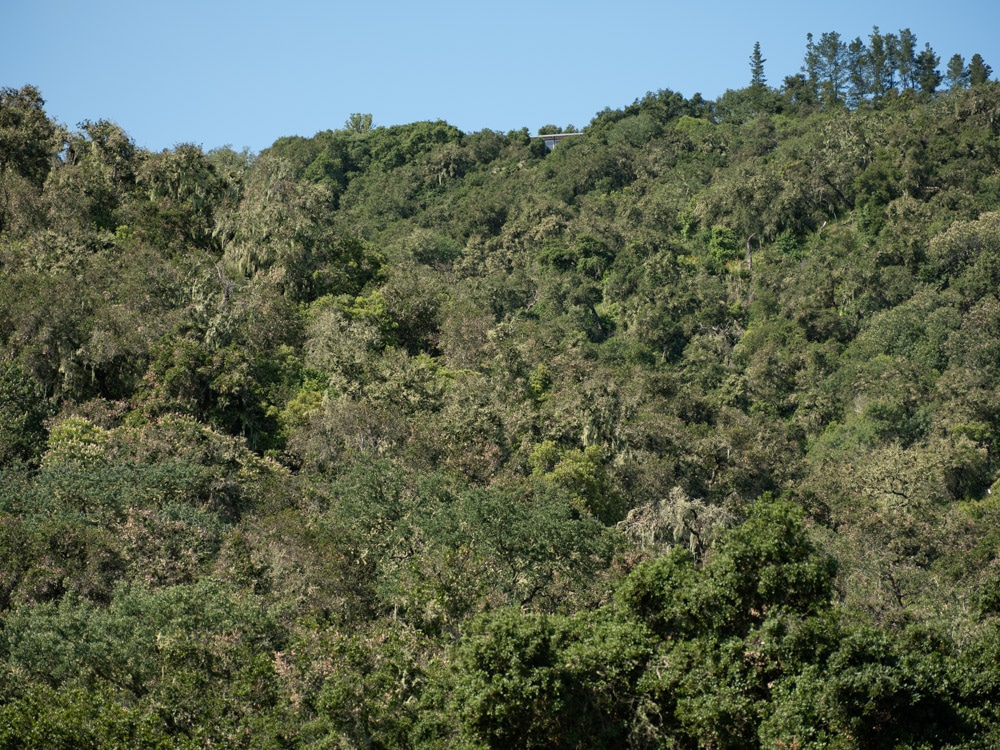
Making three shots for each variation and picking the sharpest, I exposed at base ISO of 100 for the GFX, and 64 for the Z7. I used pinpoint AF on the Z7, which means that both cameras were using CDAF. The CDAF on both of them is so good that there was far more variation between the sets of shots than there was within each series of three at the same settings. I could almost have flipped a coin to pick the sharpest. I used AF-S and a small spot, focusing on the target grove of trees. Images developed in Lightroom, with default settings except:
- WB set to Daylight
- Adobe Color Profile
- Sharpening 20, radius 1
I did not try to defeat Lightroom’s silent distortion correction.
We’ll look at some very tight crops.
If you’ve seen these here before, just jump to the images. If not, I need to spend some time telling you how to interpret them. They’re at roughly 250% magnification, enlarged to 700 pixels high on export from Lightroom. If you just want a rough idea of the differences, just look at the images as displayed in-line in the posts. However, if you wish to compare these images in detail, you should view these images by clicking on them to see the source files, then set your browser for 100% zooming. Even better, download them and make Photoshop stacks.
No matter what you do, these crops are all going to look horrible. I’m blowing them up so much so that they will represent the original file after JPEG’s discrete cosine transform has had its way with them. If you want to get a good idea of what the images would look like printed, get far away from your monitor. No, farther than that. Put a bunch of the images up on the screen and back up until the best one starts to look good. Then look at the others. There’s another reason why these images won’t look like the best thing the camera/lens combination can deliver. They’re demosaiced with Lightroom. Lightroom is not awful, but for a particular image, there are usually better raw processors. I use Lr because it’s a de facto standard, because I know it well, and because it’s got good tools for dealing with groups of images.
Here’s how to use these highly-magnified crops. The dimensions of the GFX sensor is 8256×6192 pixels. If we make a full-frame print from the GFX on a printer with 360 pixels per inch native driver-level resolution, like the Epson inkjet printers, we’ll end up with a 23×17.2 inch print. The 317×246 pixel crop you’re looking at will end up 0.8×0.68 inches (2.12×1.74 cm). Let’s imagine that you or your viewers are critical, and will look at the 23×17.2 inch print from about 18 inches (conventional wisdom is that the distance would be a little greater than that, or 29 inches (the diagonal), but you did buy a high-resolution camera for a reason, didn’t you?). The Z7 crops are 282×219, so they are blown up a bit more to make the picture height the same. As I said earlier, that stacks the deck against the Z7.
The next step is dependent on your monitor pitch, which you may or may not know. Turns out, you don’t have to know it. Just take the 250% crops and view then at 1:1. How high are they? Get out your ruler and measure, or just guess. Let’s say they are 6 inches high. 6 inches is about 7 times 0.8, so in order to view the crops the way they’d look from 18 inches on the print is to view them from 7 times as far away, or 10.5 feet.
Everything here scales proportionately. If the image on your screen is bigger than 6 inches, increase your viewing distance by the ratio of your image height to 6 inches. If you think your viewers are going to almost get their nose to that print and look at it from six inches, divide that 10.5 feet by 3, and look at the image on the monitor from three and a half feet away.
In the center:
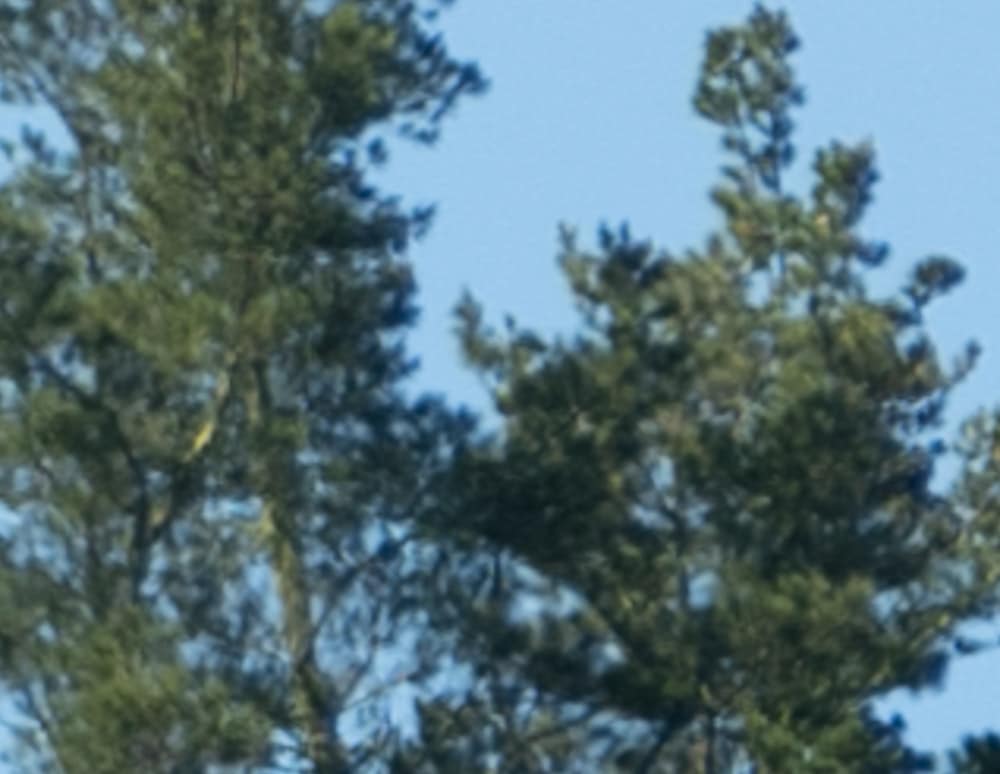
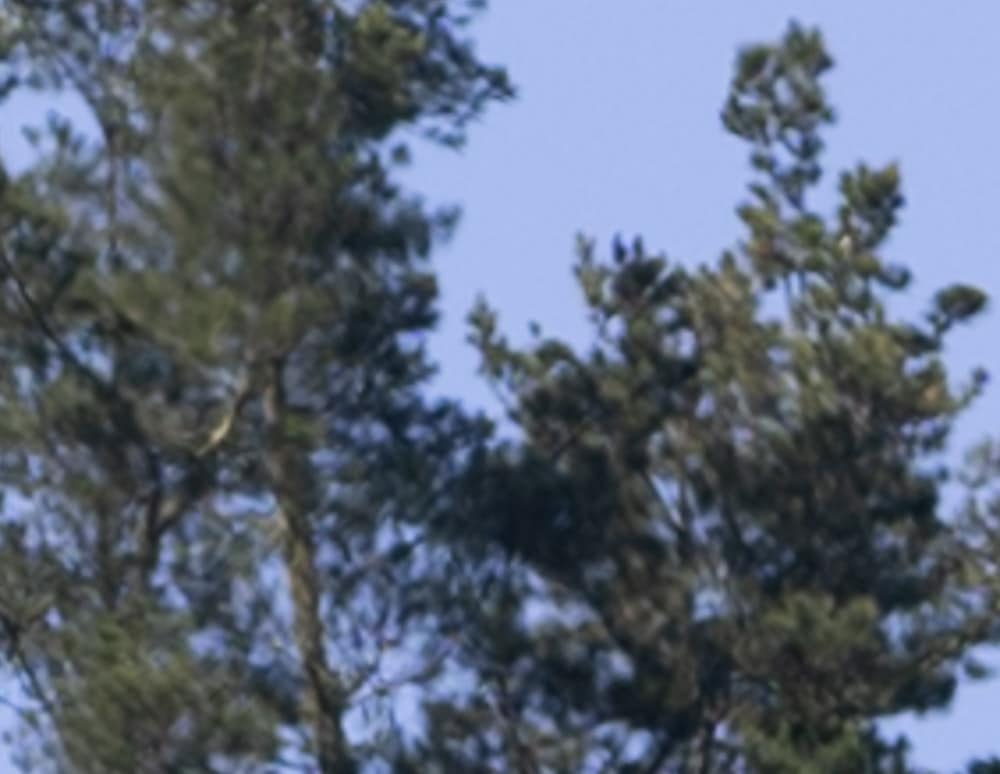
The Fuji lens is not as strong at 200 mm as it is at 100 mm, so the Nikon is just a hair sharper here. Both lenses have about the same contrast.
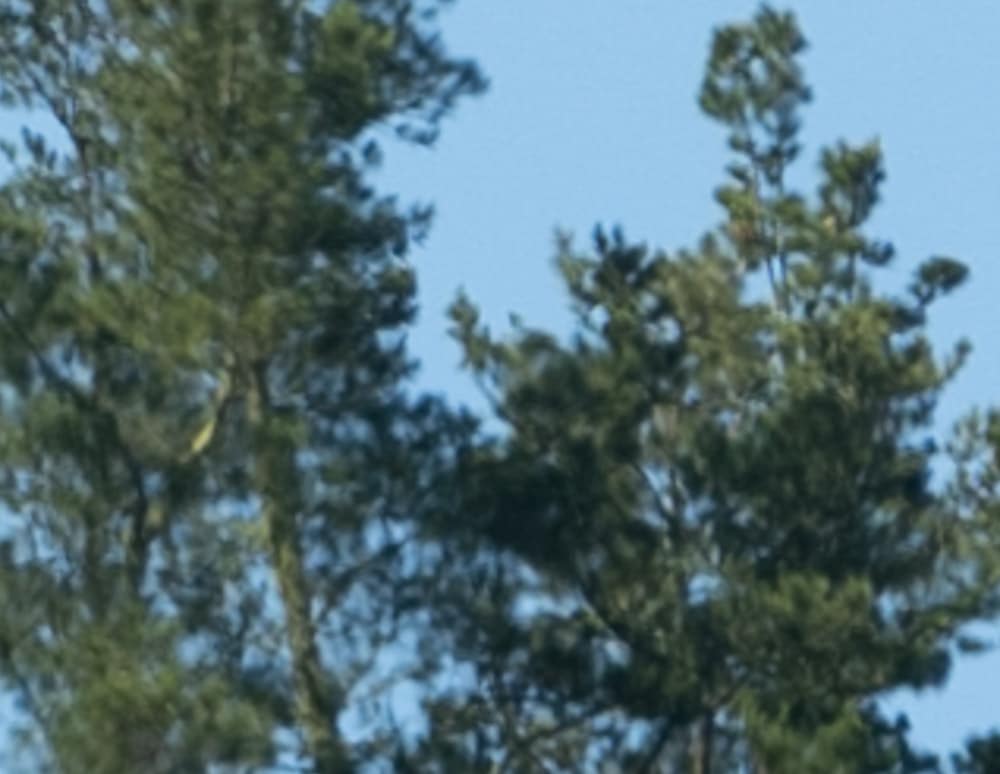
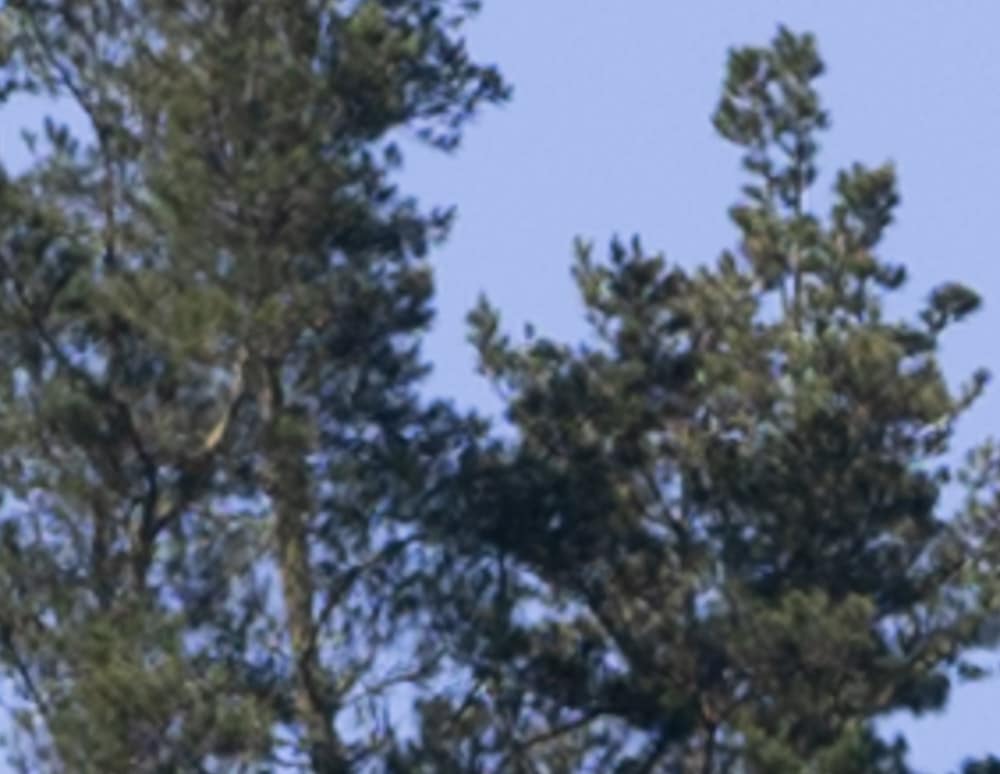
Both lenses crisp up when you stop them down a stop. The Nikon is still a tad sharper.
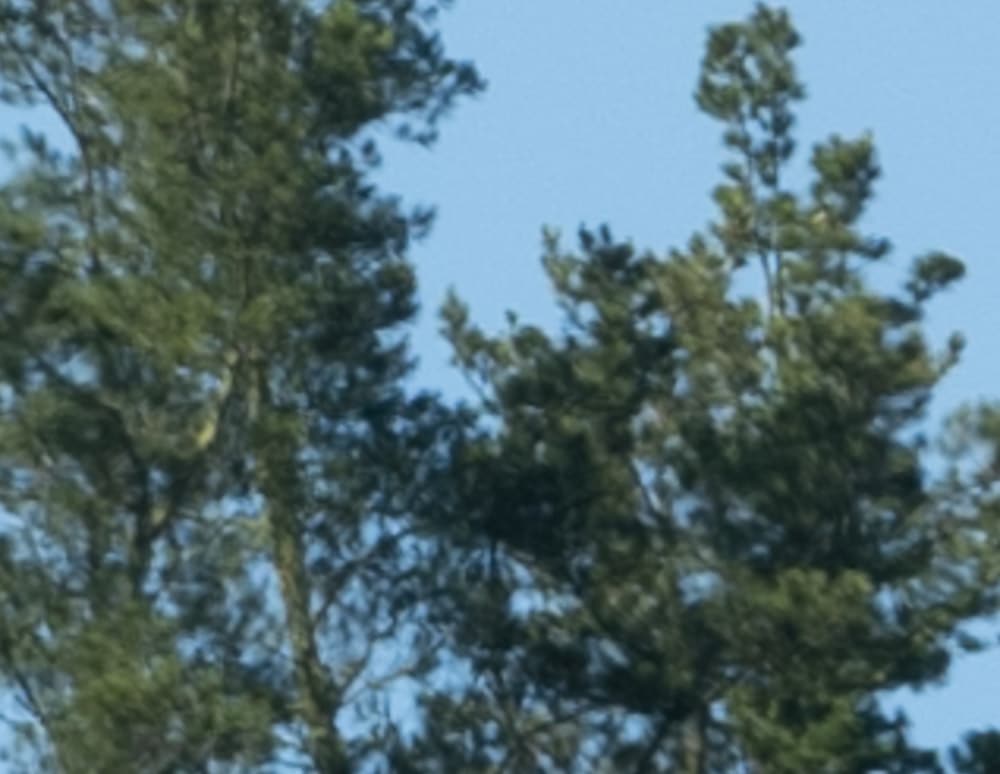
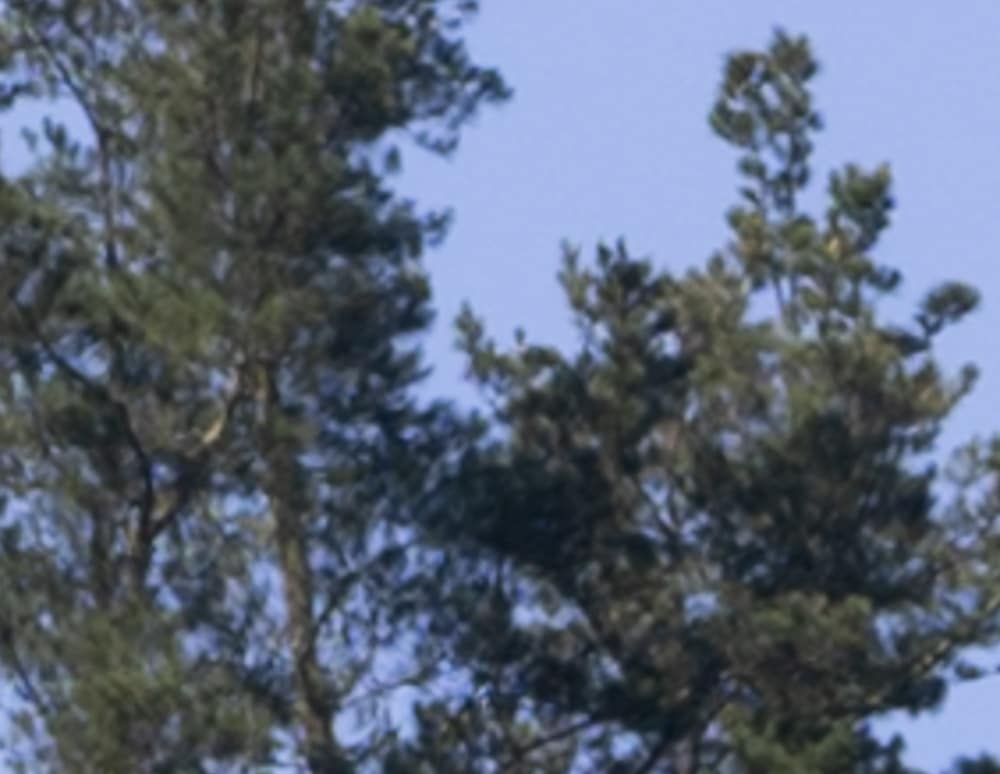
Now the Fuji is slightly ahead.
Let’s call that a tie.
Now we’ll look in the upper right corner of the GFX frame, and what would be the upper right corner of as 4:3 crop from a Z7 capture.
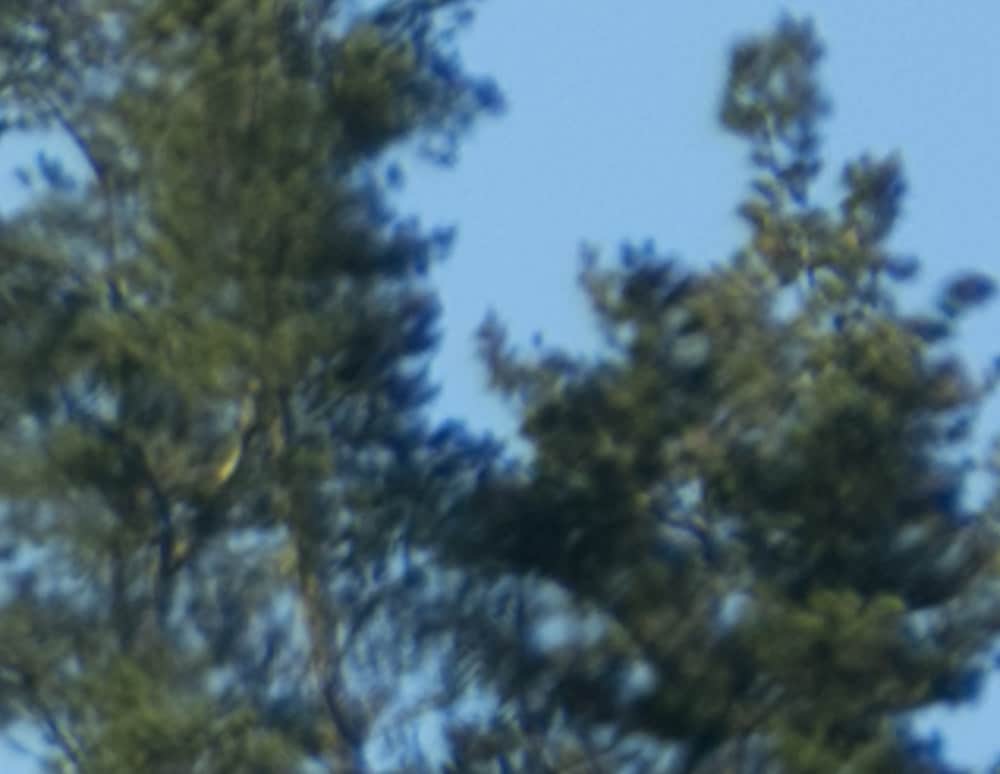
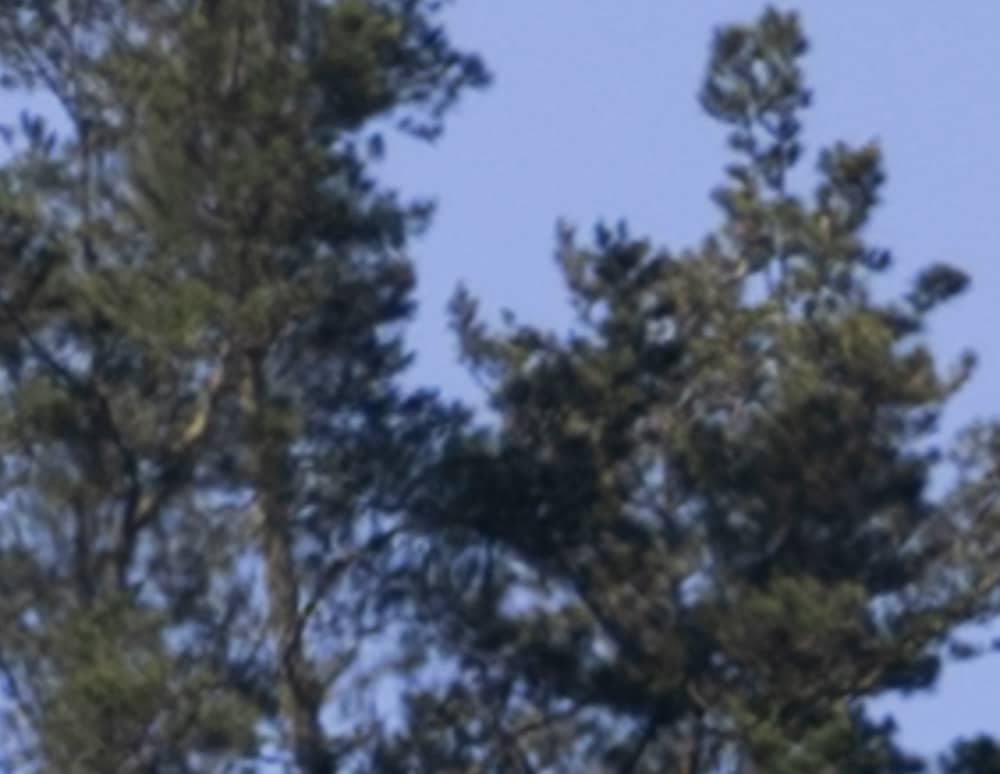
We’ve got some purple fringing with the GFX. Not so with the Nikon. The Nikon is sharper, too.
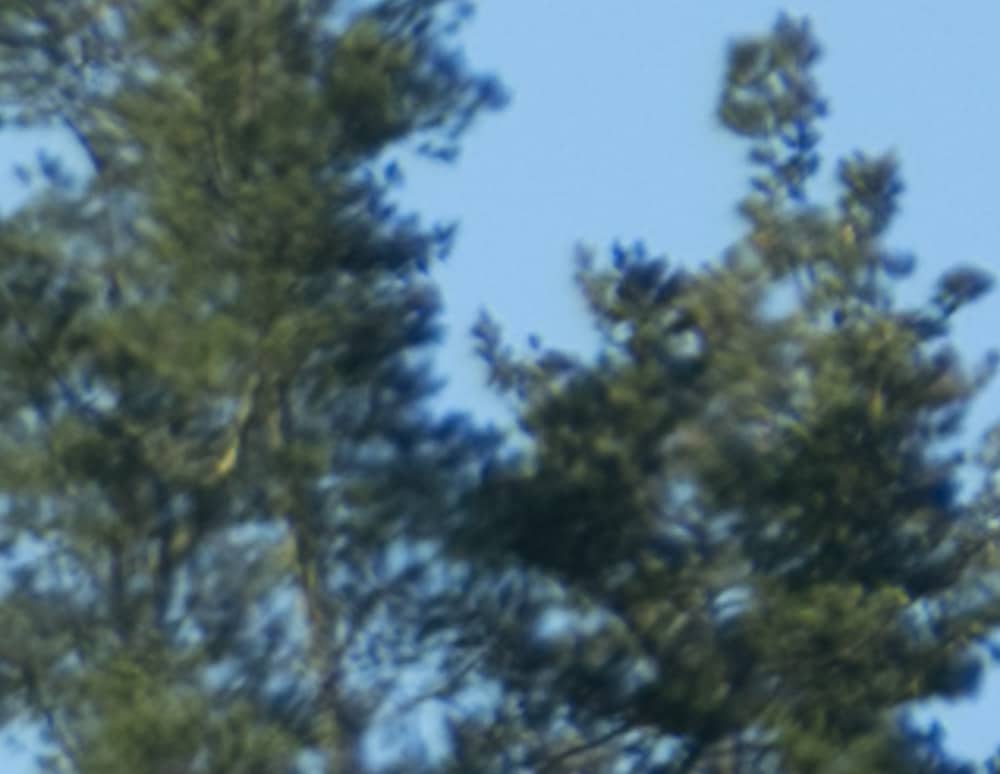
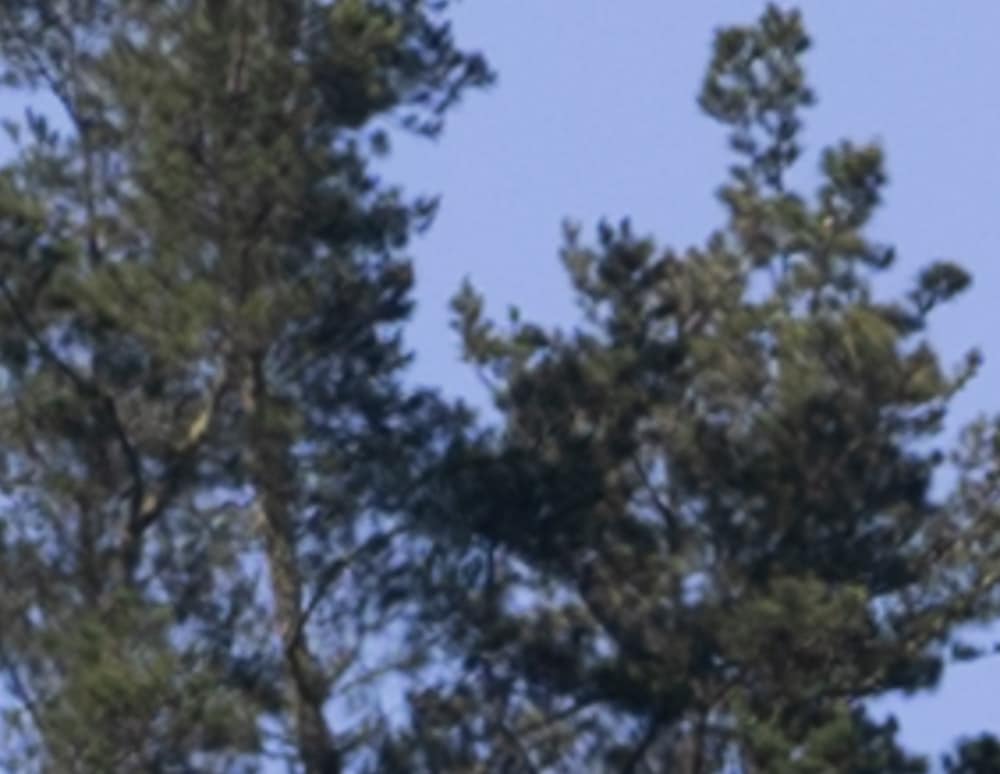
The Nikon lens is substantially ahead here.
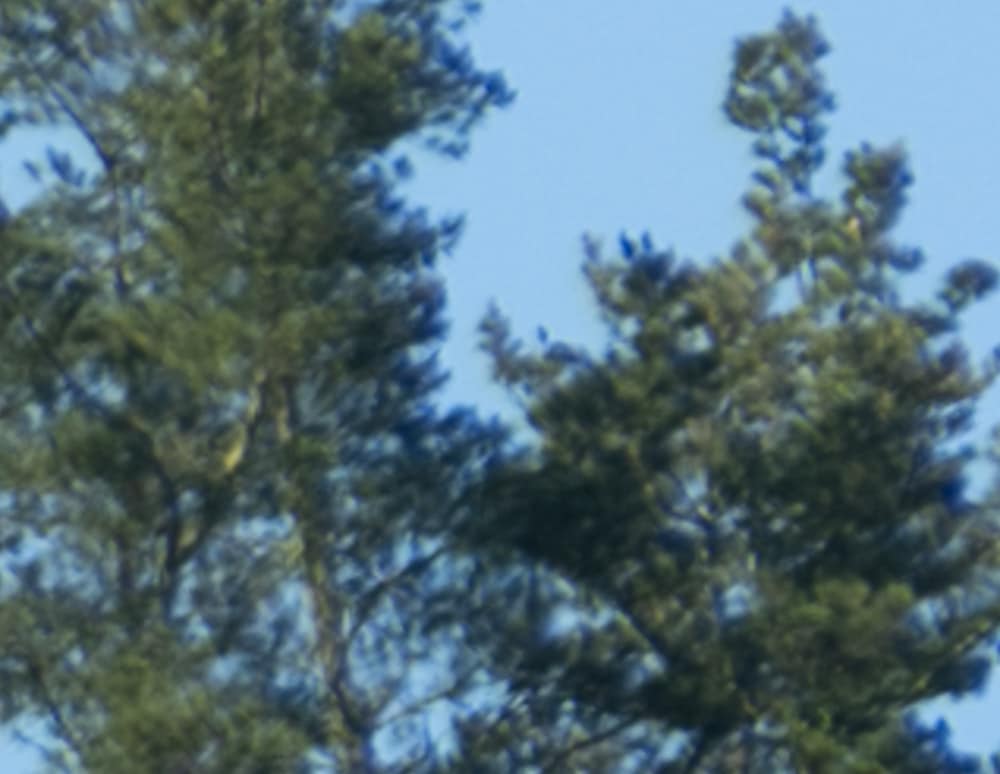
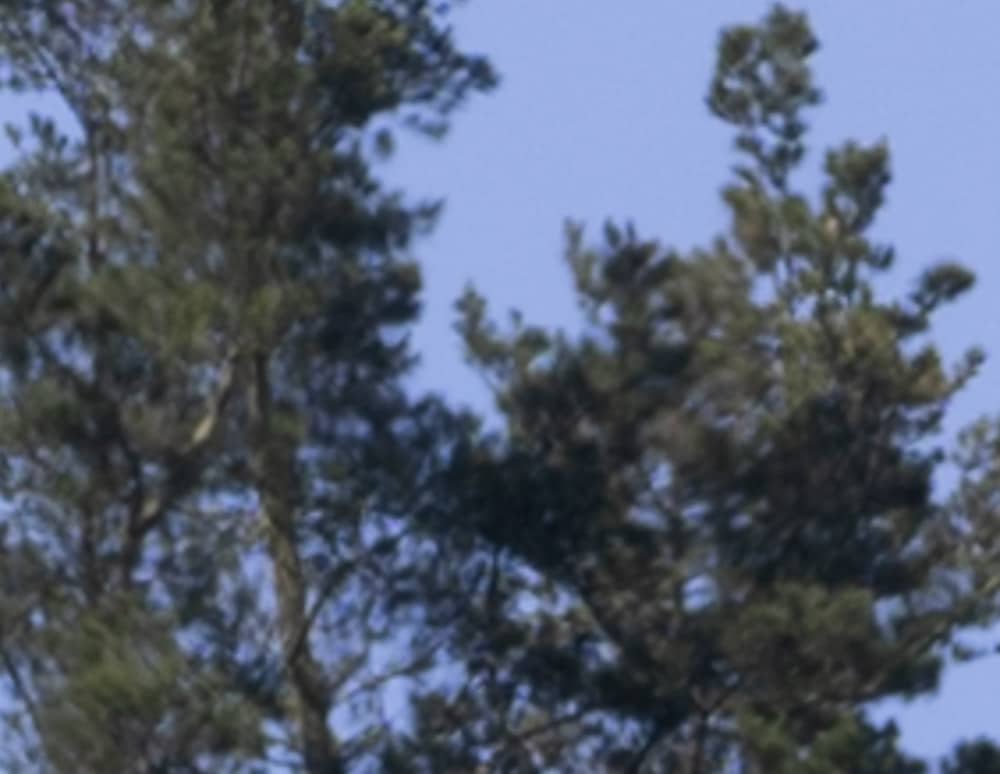
Now the Fuji is about as sharp, but it still shows some fringing.
Nikon wins this round, by a bit more than Fuji won the first one.
Here’s my net on the GFX 50R/100-200 vs Z7/70-200 comparison so far:
- Cost (assuming no sales): $7K for the Fuji combination, $5.6K for the Nikon kit with an FTZ.
- Cost (assuming current Nikon sale price and $500 Fuji sale price on the lens): $6.5K Fuji, $4.9K Nikon.
- Weight: Nikon combination slightly heavier.
- Size: Roughly the same.
- Speed: Nikon is effectively a stop faster.
- Speed: Nikon focuses more quickly, has a higher fps.
- Versatility: On the wide end, it’s a wash, but Nikon goes to about the equivalent of 300 mm on the Fuji.
- Optical performance: Fuji slightly better at 100 mm. Nikon substantially better in the corners at 145 (equivalent to Fuji 200 mm).
- Would I buy a GFX to use the 100-200 zoom on it? I most certainly would not if the Z7 and the E lens (or, probably, the coming native 70-200/2.8) were an alternative.
- Would I take the 100-200 to an event to be my main lens? Not if I could pick up the Z7 and the 70-200E instead.
- Would I use the 100-200 on the GFX where I’m not looking for the last bit of optical performance? Gladly.
- Would I pack a Z7 and the 70-200E on a trip where I was mostly going to use the GFX and other G lenses? No way.
- Fuji’s first zoom, the 32-64, was such a stellar performer that some people, including your faithful scribe, got the idea that all the Fuji zooms would be like that. The 100-200 ain’t, which brings us down to earth. That doesn’t make it a bad lens; it just means that Fuji is filling out the product line with some cheaper lenses that are good, but not great.
Again , thank you. I am honestly a little disappointed by the performance on the long end here. I had to pinch myself and go download DPR’s raw samples to remind myself that the Fuji is indeed a very good lens, and I would probably be very happy with the results. I am wondering if there optical compromises made in order to make this lens compatible with the 1.4 teleconverter. It certainly limits the distance of the nearest optical element to the sensor, though that is less important for telephoto lens design.
As usual, an informative and visibly-documented test–thanks Jim!
It would be interesting to see how the Nikon 70-200mm f/4 G VR would do, being an arguably more-comparable lens. I have no idea how good it is optically, and I totally understand your testing the Fuji against what Nikon would say is its top pro zoom lens for this coverage. It would just be an interesting comparison / data point.
I will pick just one nit: the Nikon should have been shot at f/4.5 etc., i.e., 1/3-stop more stopped down than it was. How visible the extra depth of field and whether it would have a detectable effect on sharpness is doubtful, but in a controlled test, I vote for equalizing as closely as possible.
Here’s what I get for f-stop equivalence normalized to picture height:
GFX stop——–Eq Z7 stop
5.6—————-4.1
8.0—————-5.8
11.0—————8.0